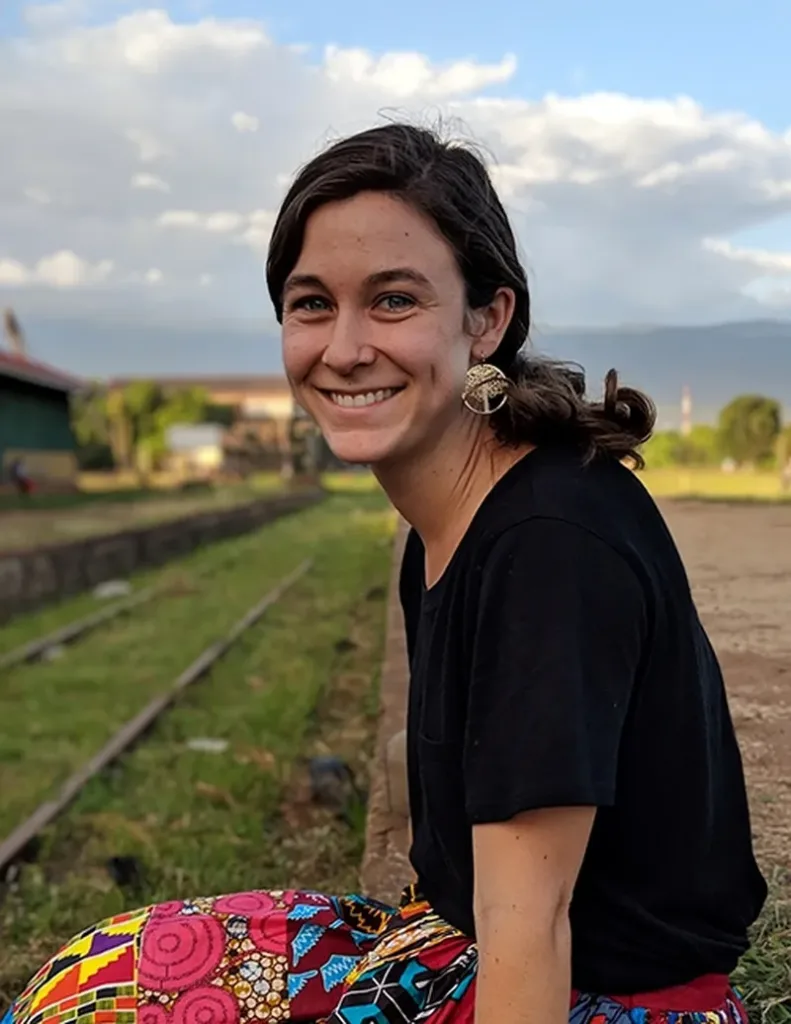
By: Alicia Houser
My Sabbatical in Mozambique
My Sabbatical in Mozambique
One of the great benefits of working in academia is being able to enjoy what is known as a sabbatical. I had the pleasure of taking my first sabbatical with SFS from May to August which took me out of Panamá to the United States, Dominican Republic, Mozambique, South Africa, Zimbabwe and Tanzania. The majority of my time was spent in Mozambique where I was able to volunteer with a local conservation organization and scuba dive with the world famous giants of the Indian Ocean.
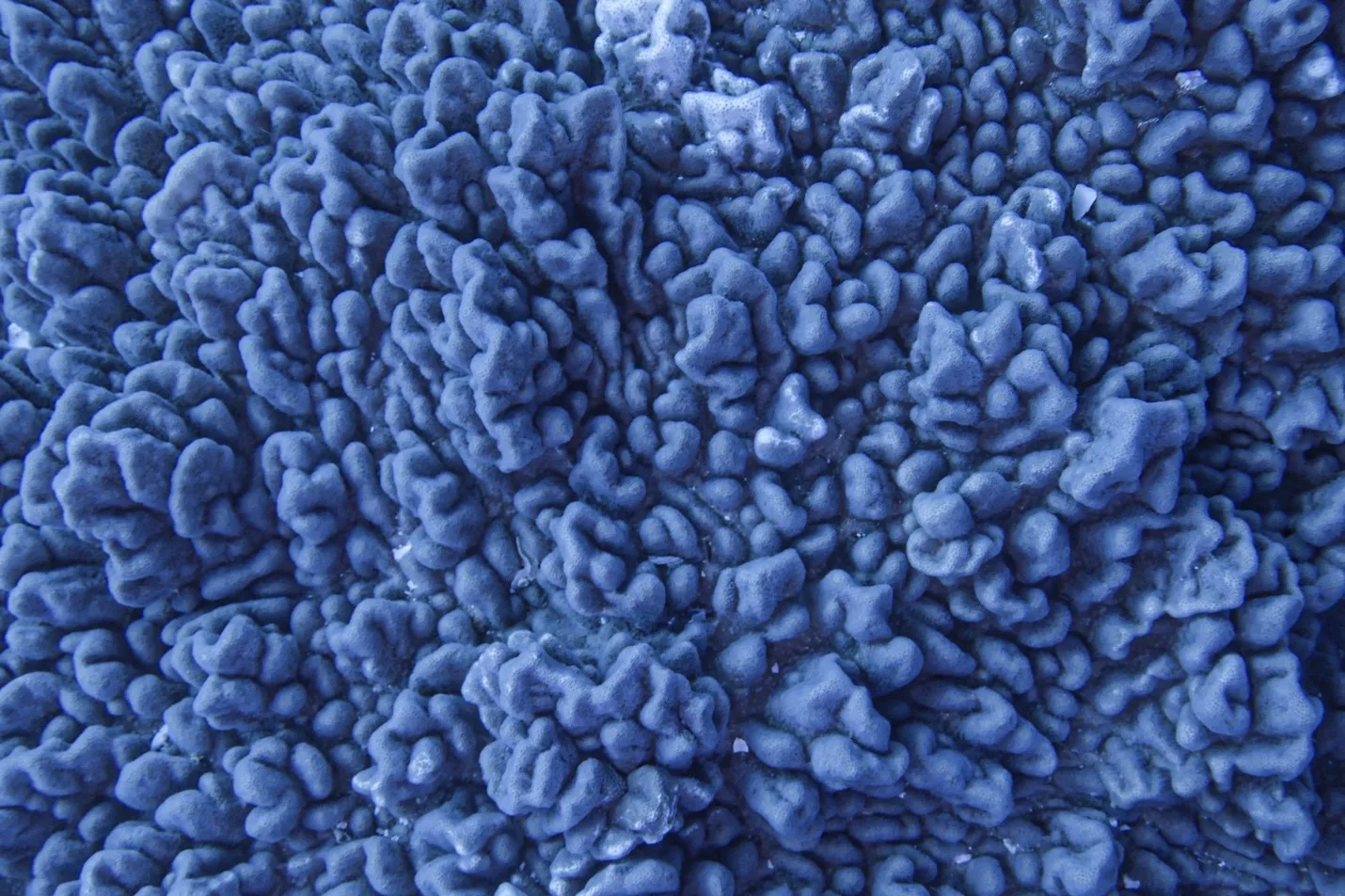
An enchanting photo of Porites lutea. I feel relaxed when looking at this photo because it reminds me that possibilities are endless. Photo by Cinda Scott
As a marine molecular evolutionary genomicist, I studied for many years at the DNA and RNA level. While I enjoyed my work at the bench, the marine biologist in me always dreamed of interacting with larger marine organisms and diving in far away places. For my sabbatical, I did just that, and it was the trip of a lifetime. I arrived to Tofo, Mozambique not knowing anyone or all that much about the country that would be my home for two months. In many ways, I was able to feel what it might be like to be a student heading to study abroad on one of SFS’s many programs.
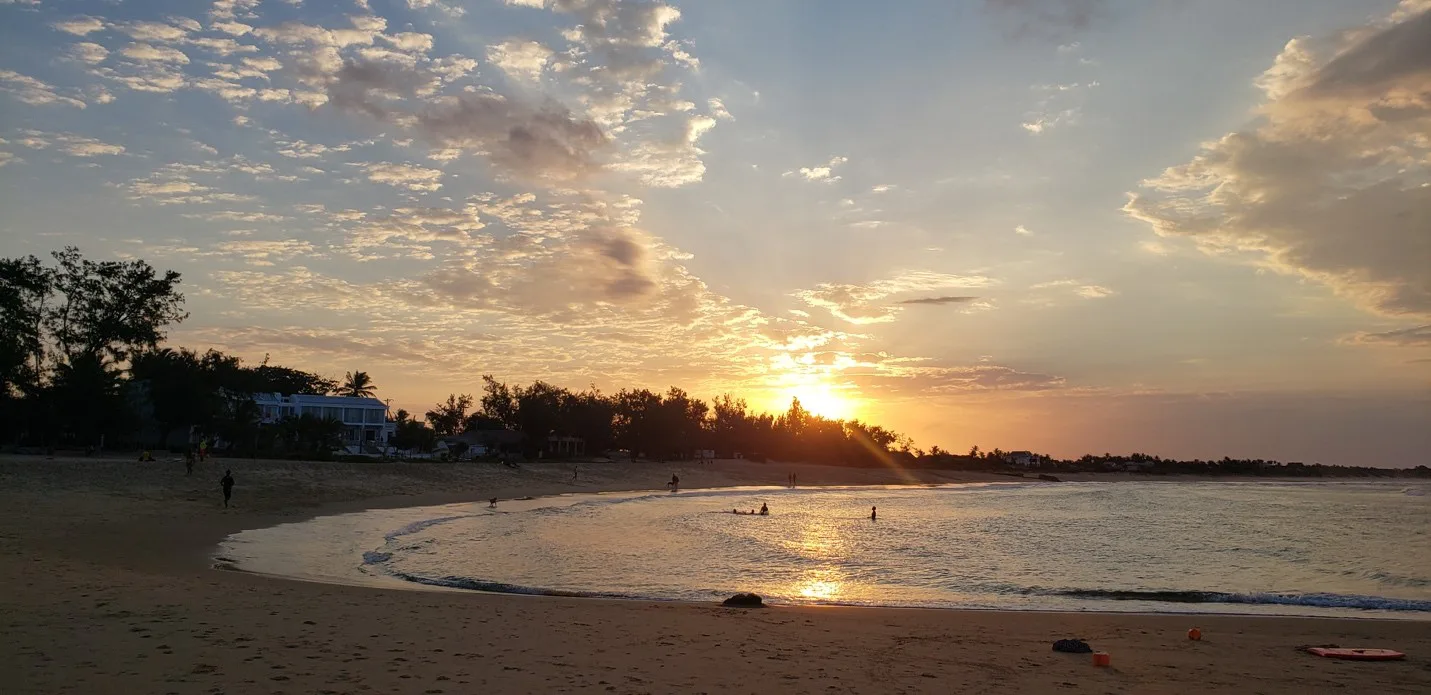
Sunset at Praia de Tofo, Mozambique. Photo by Cinda Scott
The world of marine megafauna research in Tofo centers on whale sharks, humpback whales, dolphins and sharks, but primarily focuses on manta rays. While diving on Manta Reef for the first time, I was awestruck as one of my lifelong dreams became a reality when a giant manta ray gracefully passed in front of me. We checked each other out for a while and briefly spent some time together, in what I can only describe as a few incredibly intense and thrilling minutes. I felt a sense of wonderment and responsibility that I had never experienced in my life. This wonderment did not stop for the entire two months! I swam with whale sharks, helped to tag sharks in the incredibly beautiful Bazaruto Archipelago National Marine Park, observed humpback whales breach so close to our boat I thought we might sink, and I finally was able to see large octopus change a million pixels in the blink of an eye. Every dive was breathtaking, and I was grateful for every moment.
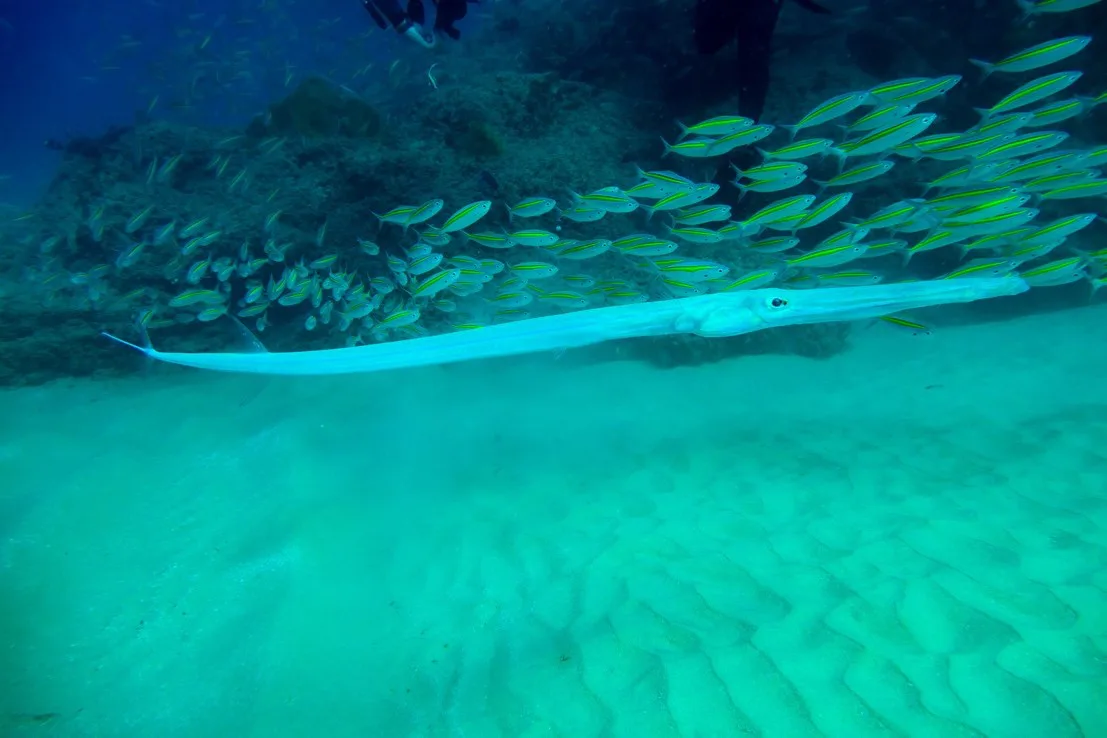
A rather large coronet fish hung out with me on a shallow dive in Tofo at Mike’s Cupboard reef. Photo by Cinda Scott
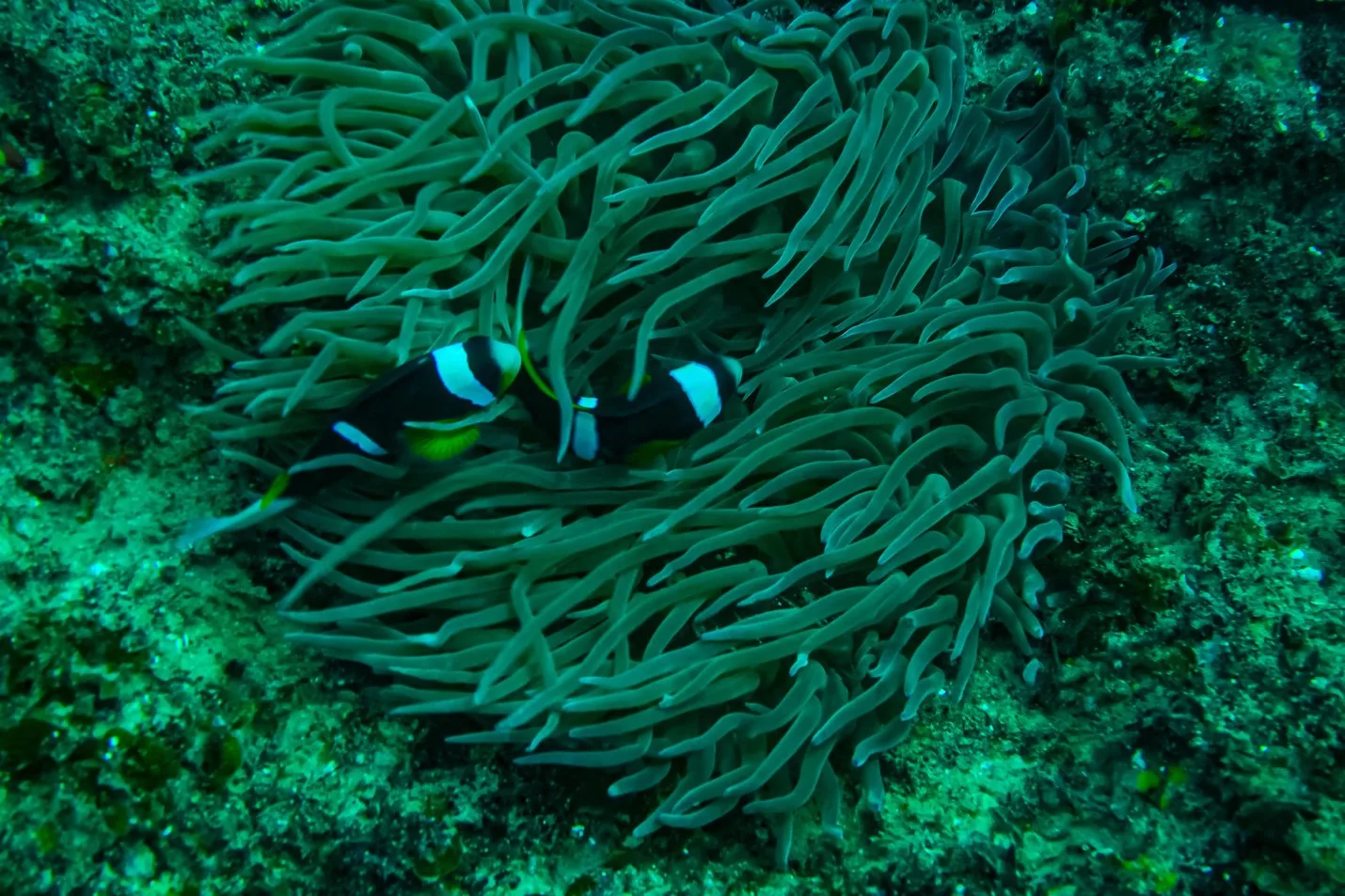
“Forever Friends”. Two anemonefish defended their home as I tried to move in close for a good shot. Photo by Cinda Scott

“I see you, boo”. Sometimes when you hang out and let fish swim around you, you can really capture their attitude. The pattern on this fish is absolutely amazing! Photo by Cinda Scott
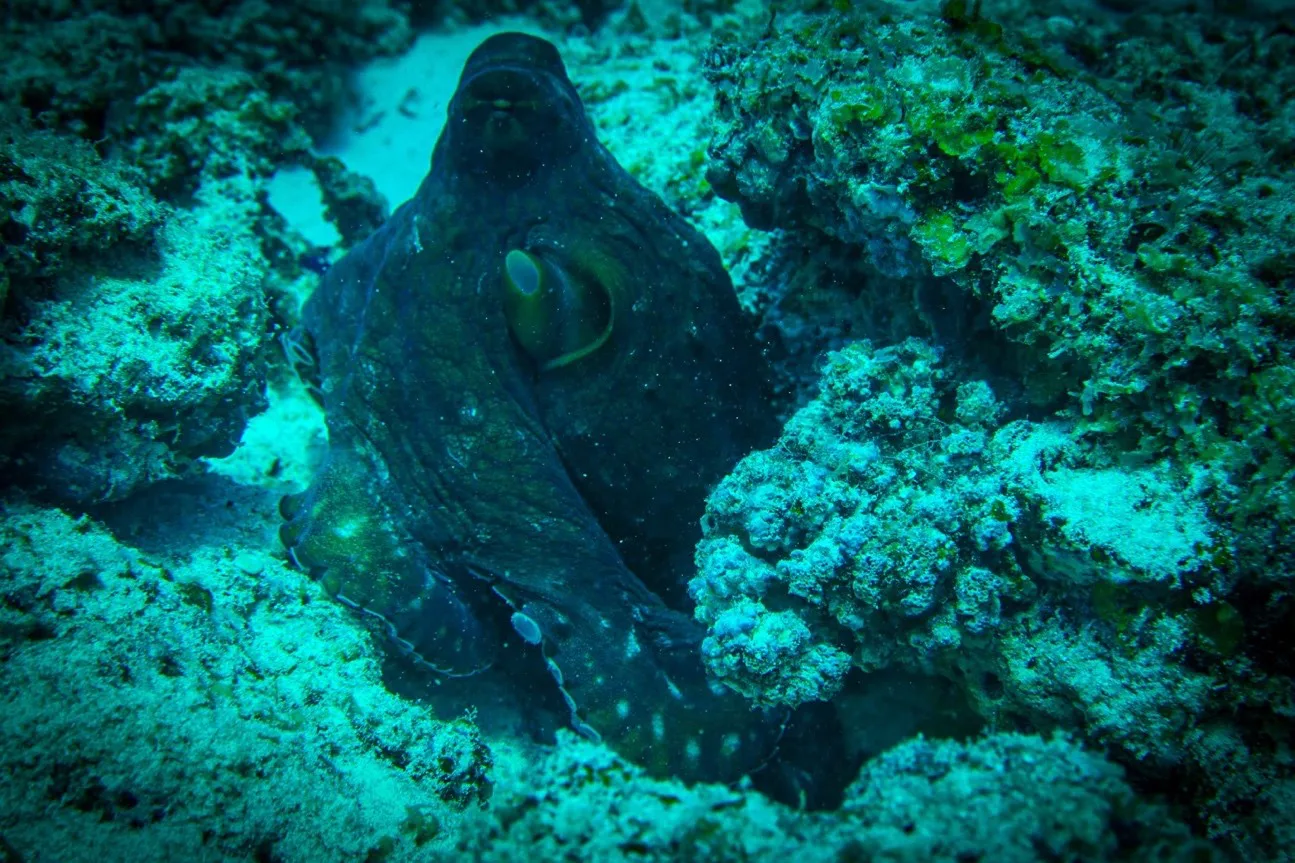
While diving in Tofo, I was able to see many octopi out of their homes and some swimming. This octopus turned a dark black-brown as I moved close to it and shortly after flashed a bright white prior to swimming to another hole (see photo below). Photos by Cinda Scott at Salon dive site, Tofo.
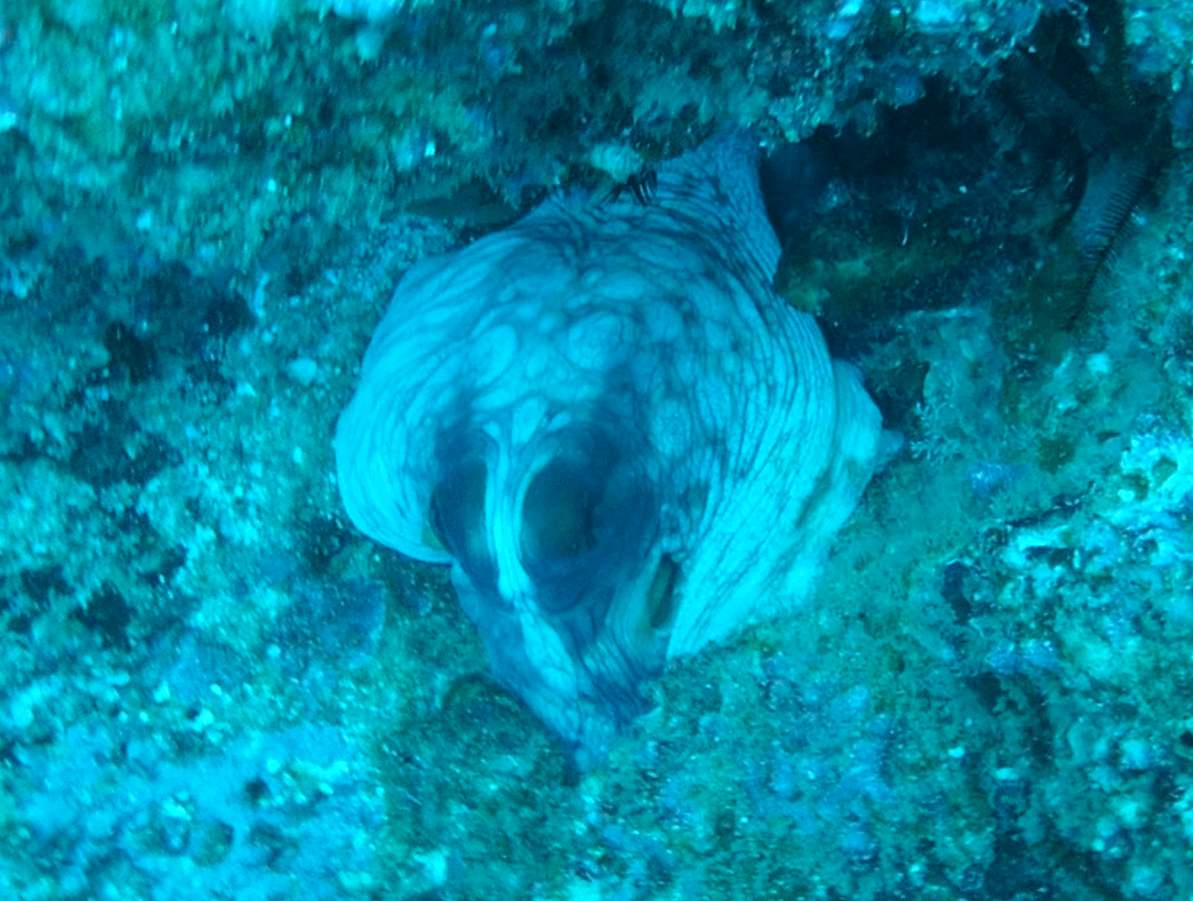
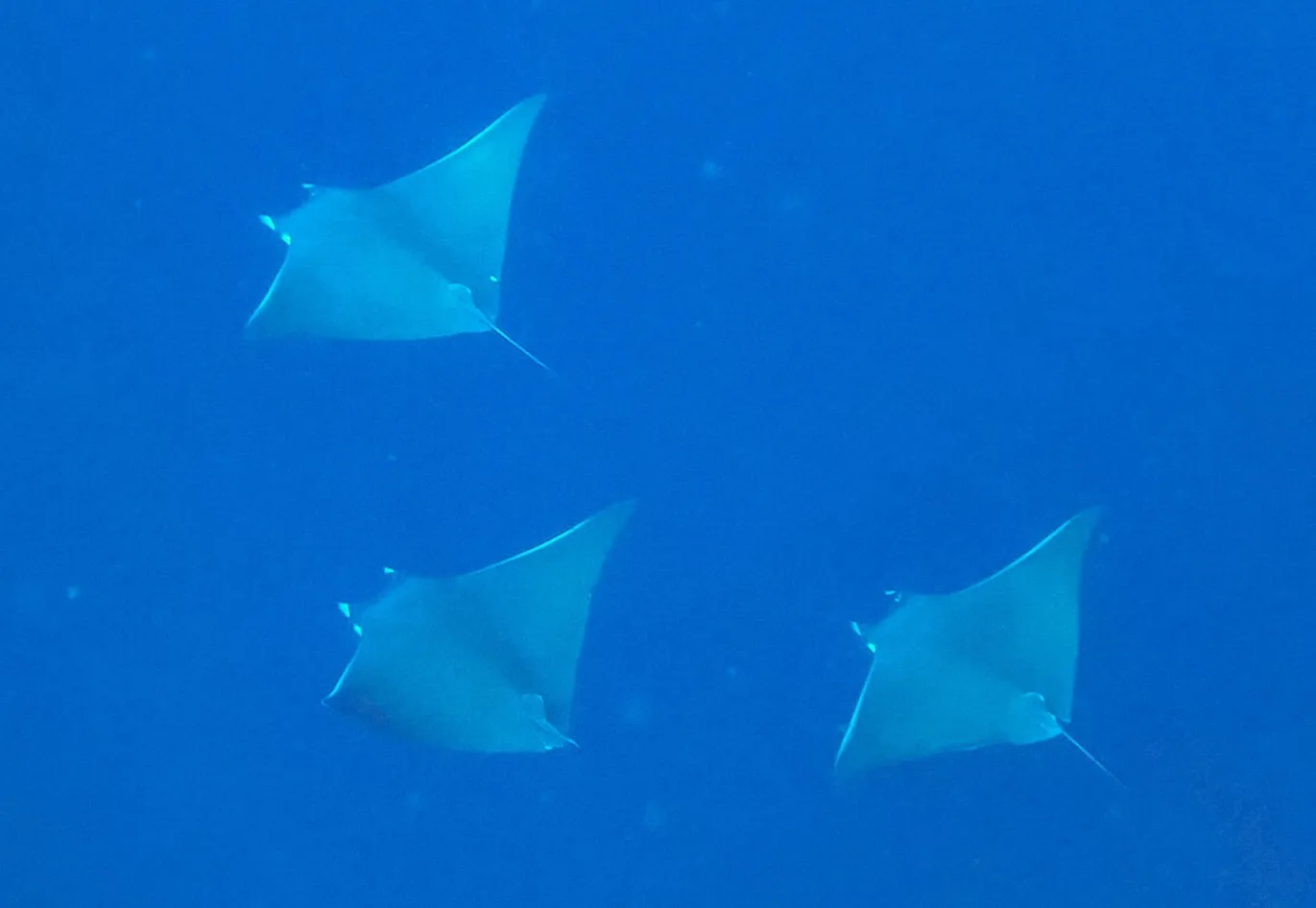
Devil rays! At a safety stop we got to see a school of devil rays (Mobula) pass beneath us at Giant’s Castle reef. Photo by Cinda Scott

A marbled electric ray just saying hi as it passed me by at Chamber of Secrets dive site. Photo by Cinda Scott
One of the joys I have as a marine biologist is working in the realm of conservation. In Tofo, just as in many other regions of the world, there are serious threats to the beautiful creatures that call Tofo home. Specifically, foreign fishing fleets blatantly do not obey fishing laws and enter the coastal areas of Tofo under the dark of night to fish unscrupulously, taking everything in sight. I witnessed first-hand the devastating effects this is having on the local people of Tofo who depend on fishing for their livelihoods. The shift in people’s survival strategies was readily apparent, and I was able to observe many fishermen fishing over reefs instead of open ocean due to the lack of fish offshore. Illegal fishing practices in addition to over-visited dive sites are serious threats to this tiny fishing town that is increasingly receiving more and more visitors due to its unusually high abundance of marine giants.
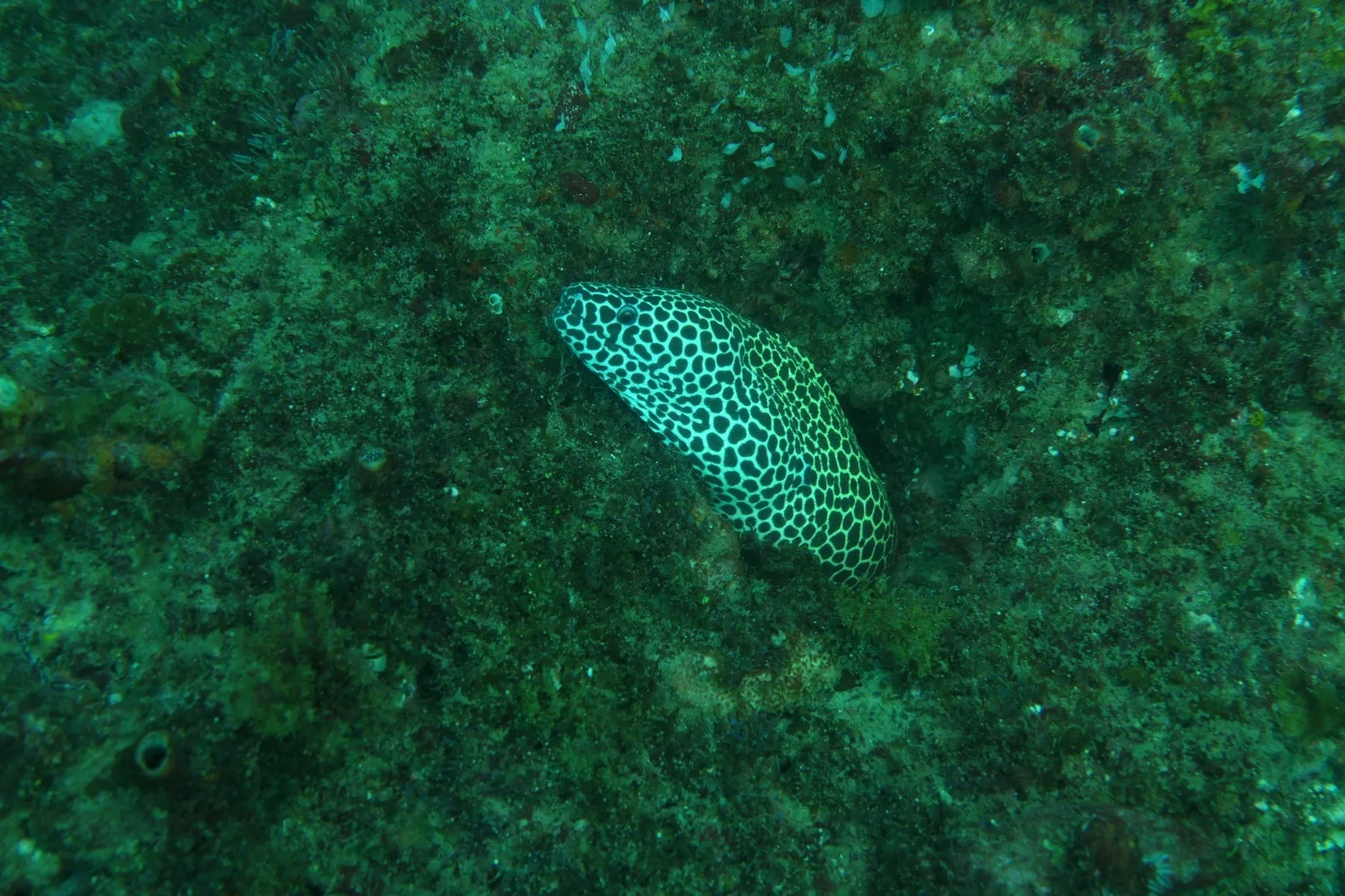
“Ready for my closeup”. A honeycomb moray eel checked me out and posed for this photo. I was stunned to see a honeycomb eel leave its home and reveal its full size (see below). Photos by Cinda Scott
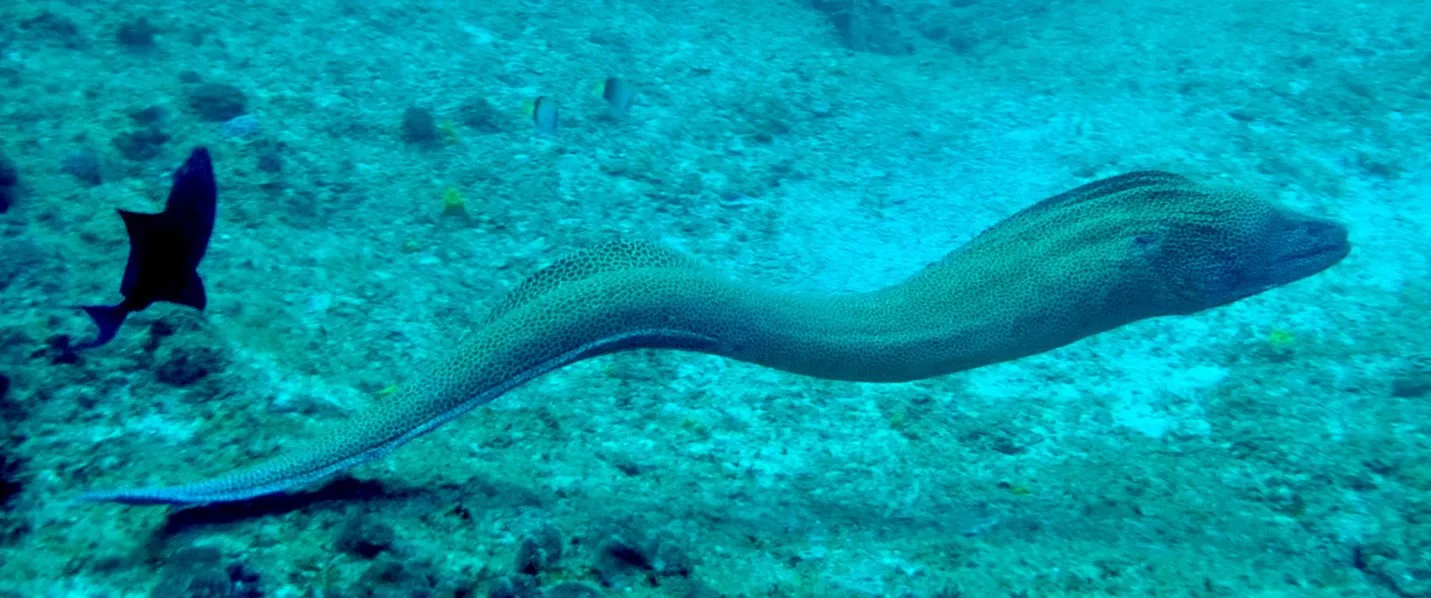

A school of trevally passed me by while scuba diving. Trevally are in the jack family (Carangidae) and are very fast swimmers. Photo by Cinda Scott
Much like in Bocas, where our conservation effort is focused on working with local government entities and communities to provide data and information on the impacts of tourism and the status of natural resources in the archipelago, Tofo is beginning to experience a boom in tourism. Importantly, Tofo is the final destination for humpback whales that migrate to the region from the southern Indian ocean. These whales are one of 14 distinct populations of humpback whales found throughout the world. People flock from all over to witness this tremendous event, and I too was able to witness the return of the whales to the region; each day more and more whales appearing with sightings of 20 or more in a day. While many Mozambicans are being trained in the dive industry to work at local dive shops, the economic power remains in foreign hands. We know that for conservation efforts to succeed, local communities and people who know the region best must be at the forefront. That said, education is critical for conservation to succeed in Tofo and foreign and local entities must work together to support young people seeking to become professionals in the lucrative dive industry of Tofo. Additionally, dive outfitters should work together to reduce impact at various sites perhaps through the use of a rotating schedule.

Giant Manta Ray! There are two species of manta rays, Manta birostris and Manta alfredi. Pictured here is a beautiful giant manta ray, Manta birostris that I had the pleasure of swimming with in Tofo. Looks like he had some trouble with a shark as evidenced by the two shark bites. It is difficult to tell by the photo, but this giant manta measured approximately 5 meters wing tip to wing tip. Photo by Cinda Scott
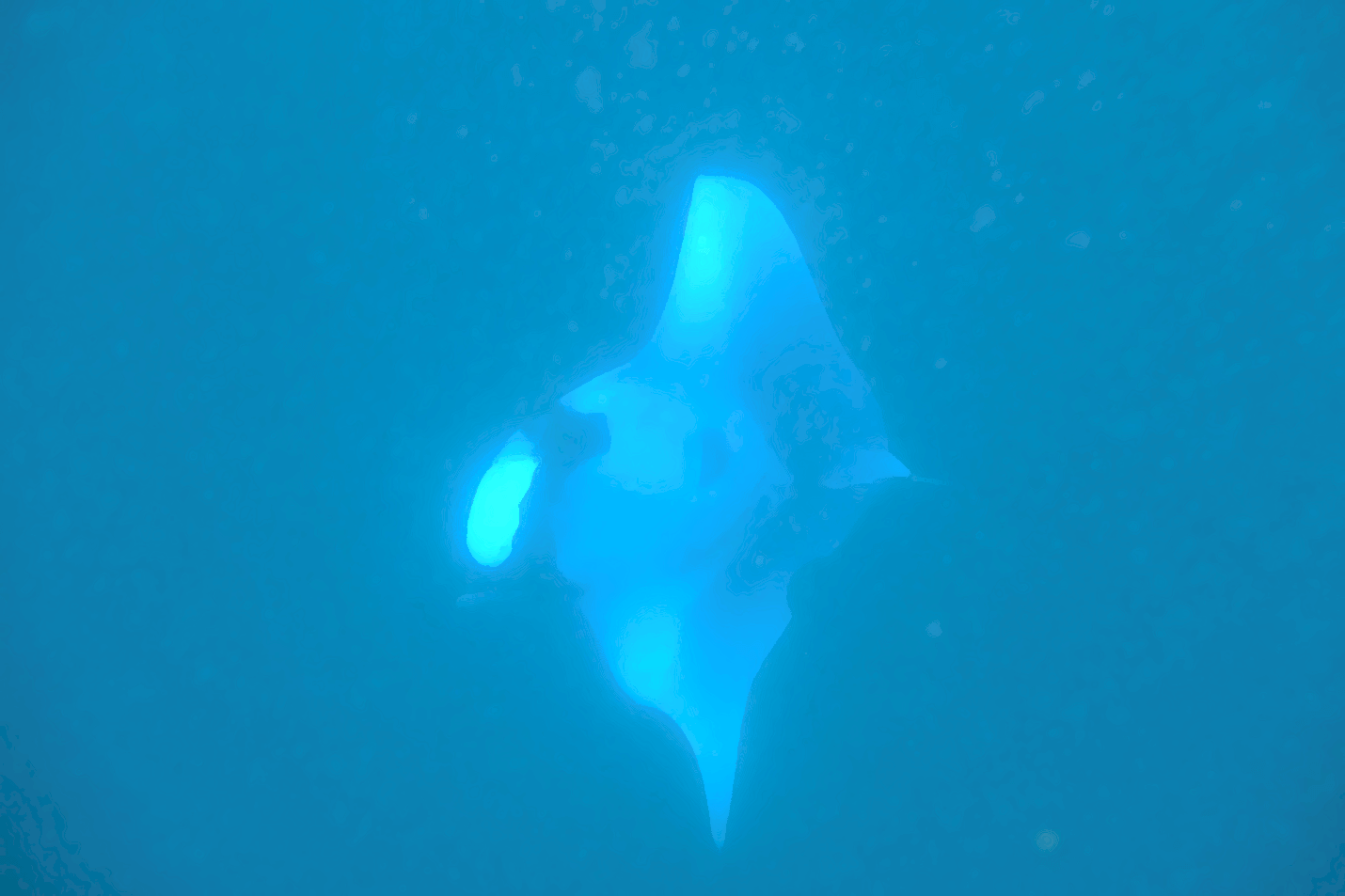
Reef Manta! I was able to snap this photo just as this gorgeous reef manta, Manta alfredi, approached me and flipped over to show me its belly. A very magical moment. Photo by Cinda Scott
On my last dive in Tofo (I completed 30 dives while I was there!), we heard whale songs in the distance, and I oddly remembered feeling a warm sensation, albeit the water temperature was only 19 degrees Celsius that day. As we ascended from a depth of 29 meters, I remember thinking at the safety stop how cool it would be if a whale just casually passed by. After three minutes, no such luck and I surfaced with the group. Bobbing in the water amongst a light chop and swell, I felt the enormity of the ocean, its energy, its pulse and its force. I thanked the ocean for providing me with an amazing two months, for not having too many days with strong current and swell, and for receiving my negative entries, even the not so perfect ones (in Tofo, the surface currents can be unpredictable and therefore all entries are negative entries to avoid being swept away). We waited for our rubber duck boat to pick us up and I pulled myself onto the boat one last time (by far the most challenging part of my sabbatical). As I gracefully flopped to floor headfirst, the captain of the boat approached me excitedly and said, “Did you see the whale, Cinda? It was just 15 meters from where you did your safety stop!! It was just there, did you see it?”. I managed to right myself up, still sitting on the bottom of the boat. I stared up at the Captain and I shook my head no, but I had the biggest smile on my face because during that safety stop, I absolutely knew that we were not alone.
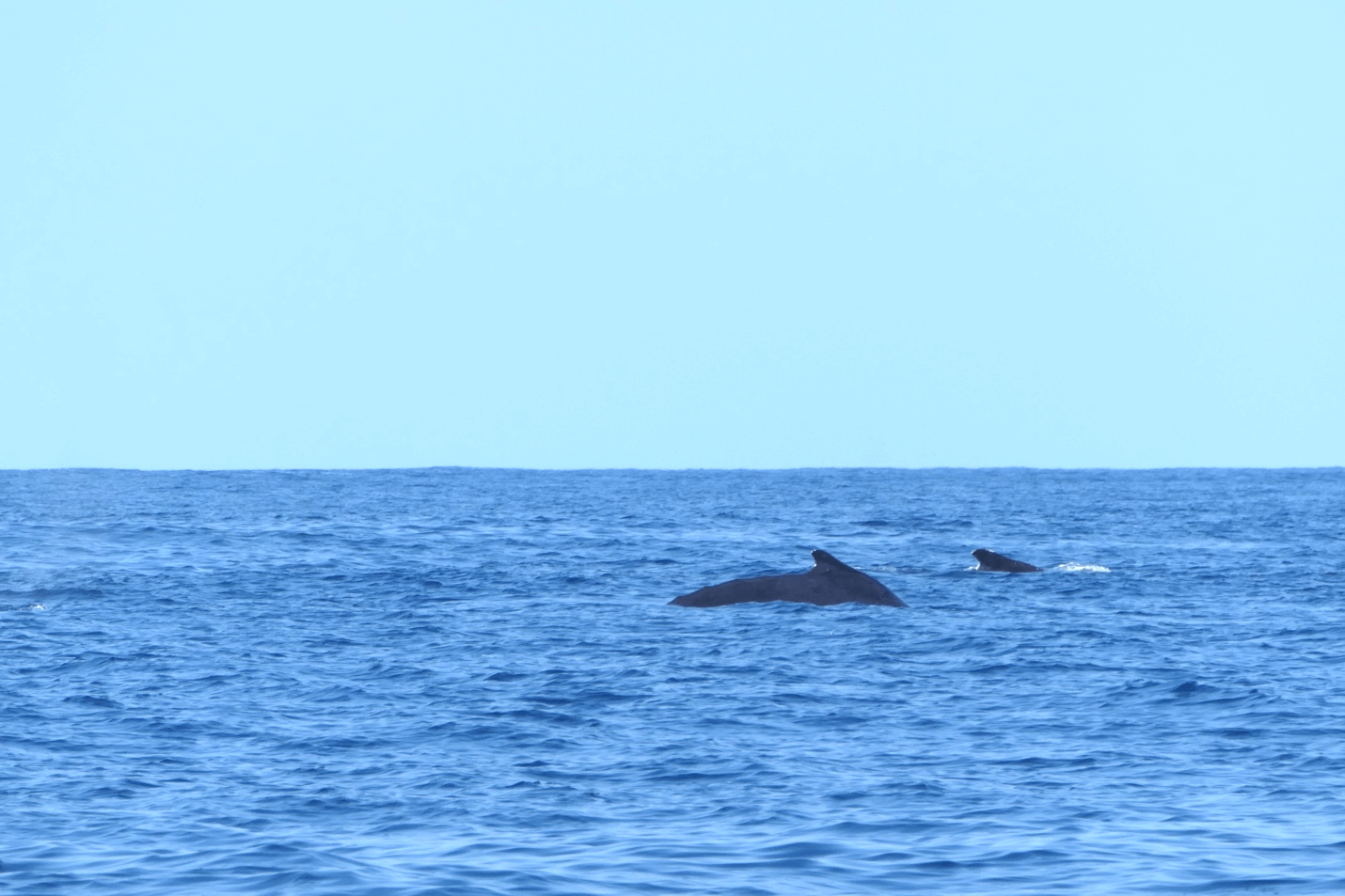
Humpback whales are a common site in Tofo during the months of July-August when they migrate from southern Africa to Tofo, Mozambique. Photo by Cinda Scott

Whale shark (Rhincodon typus)!!! It was so big that he did not fit into my frame, but I was in awe of this beautiful giant and I was so thankful to have just a little time with him. Apparently, at almost 6 meters, this “little” male was a juvenile. Photo by Cinda Scott.
My one wish prior to leaving was to somehow figure out how to provide these kinds of experiences to the children of Tofo, many of whom live near the beach, but who rarely, if ever have the opportunity to scuba dive and experience the beauty of the depths of their own backyards. After visiting a school with a local community activist, I got to work on developing and creating curriculum for school aged children focused on the five main types of marine ecosystems and their associated organisms in Tofo. Prior to going on sabbatical, I had images of me doing “serious” research and data gathering, but I can honestly say that I learned so much more in working with the members of the community, the teachers and school kids, and I know the curriculum that was made will be utilized and remembered for far longer than any article in some obscure journal that not too many people will read. On my sabbatical I thought, perhaps as scientists we are missing the point. Shouldn’t we be working to provide long lasting and sustainable solutions for the problems facing communities and ecosystems? Shouldn’t we be educating young people about their world and how to care for it long after we are gone? My sabbatical taught me many important lessons, but none as important as the need for scientists to educate and communicate with all sectors of society and to bridge the gap between science and decision making. I went into this experience with few expectations, but certainly with a growth mindset and I gained a tremendous amount of knowledge. I am forever a lifelong learner and my experience in Tofo allowed me to understand conservation from a different perspective and with a deeper appreciation for the need to have scientists working to share, communicate and teach in an inclusive and sustainable way. In the end, I could not have asked for a better experience and I am grateful to SFS for the opportunity and for supporting me in living out a lifelong dream.
I would also like to thank Liquid Dive Family for hosting me and to all of the dive instructors who day in and day out took care of me and made sure every dive was safe and fun.
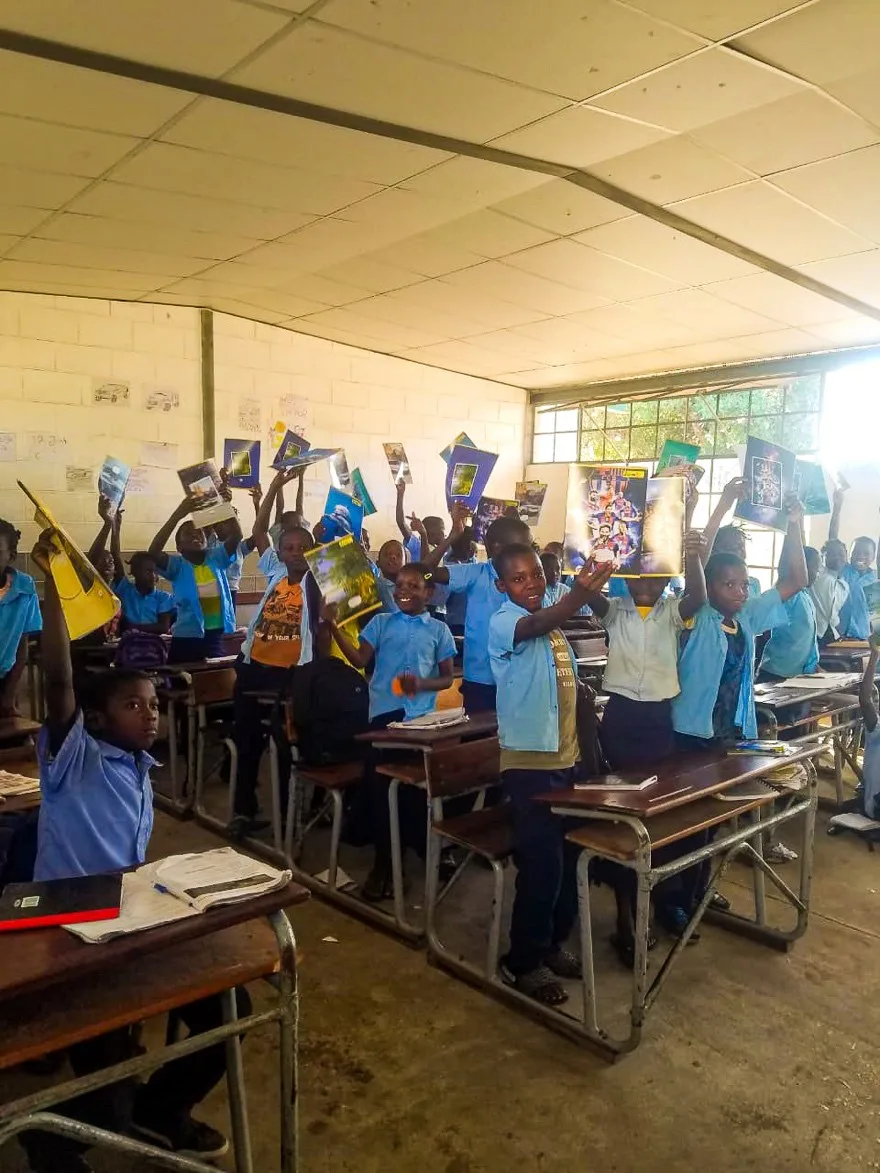
School children in tofo, Mozambique proudly show their new notebooks for the camera. What an honor to be invited into their classroom to talk about marine life and to share these notebooks. Photo by Cinda Scott
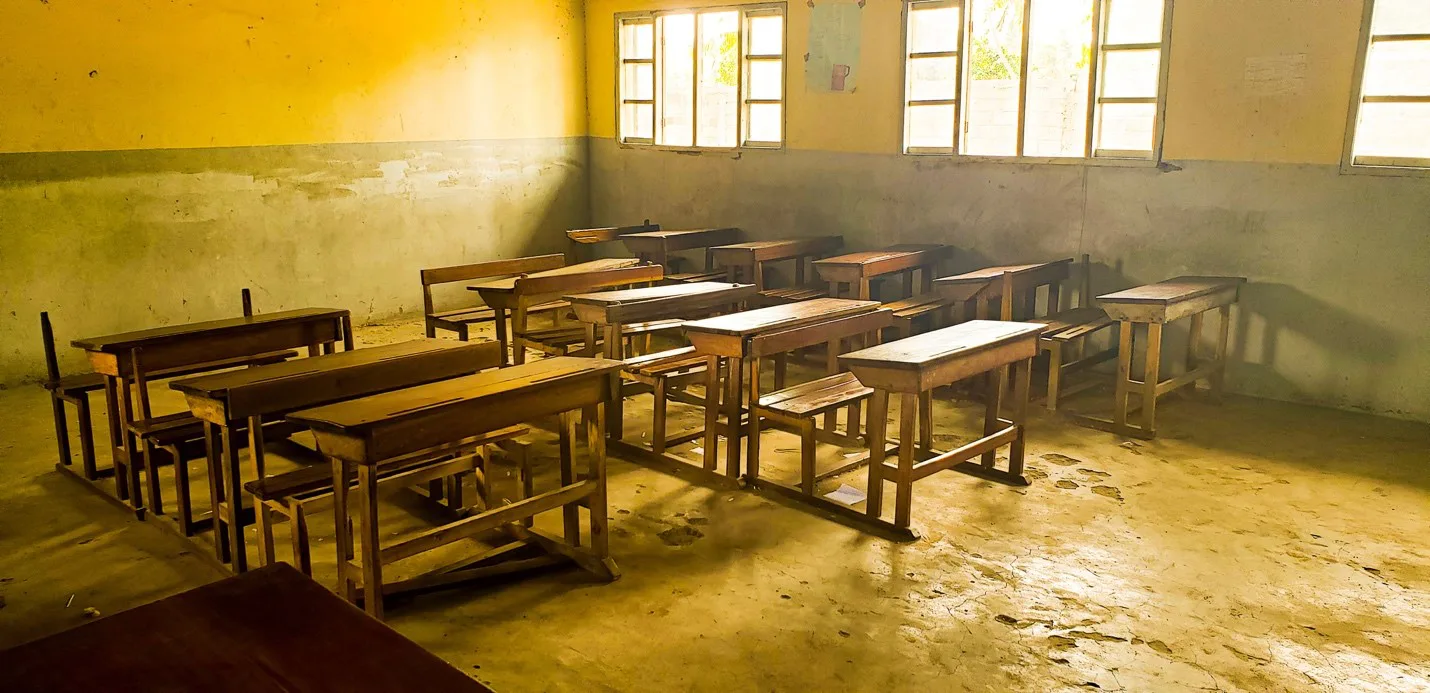
An empty classroom typical of schools in the Tofo, Mozambique region. In some classrooms children sit on the floor because there is not enough desk space. Photo by Cinda Scott

A typical scene on the reefs of Tofo. This was taken at about 27 meters below sea level at dive site, The Office, Tofo, Mozambique. Purle is one of my favorite colors and I was mesmerized by the beauty and variety of coral in the region. Photo by Cinda Scott
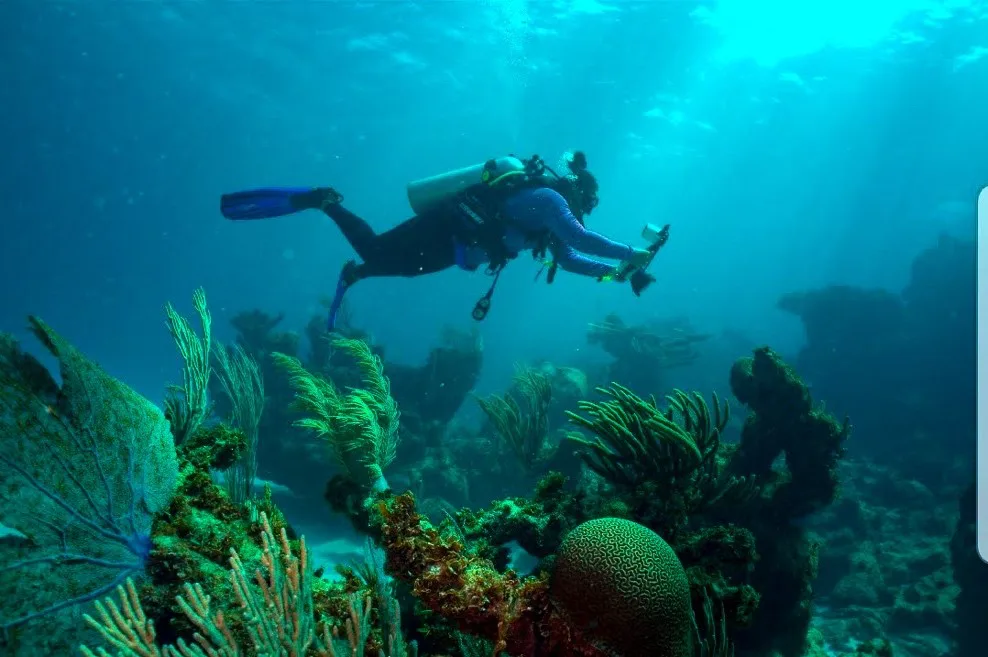
Exploring the reefs of the Dominican Republic while attending the 39th Annual Association of Marine Laboratories of the Caribbean Scientific Meeting in May, 2019 to kick off my sabbatical. What a difference between the Caribbean and Indian ocean! Photo by Dr. Heidi Hertler

Resting at the surface before my next dive in the northern tip of Zanzibar, Tanzania in the Kendwa region. Photo by my dive buddy from Italy.
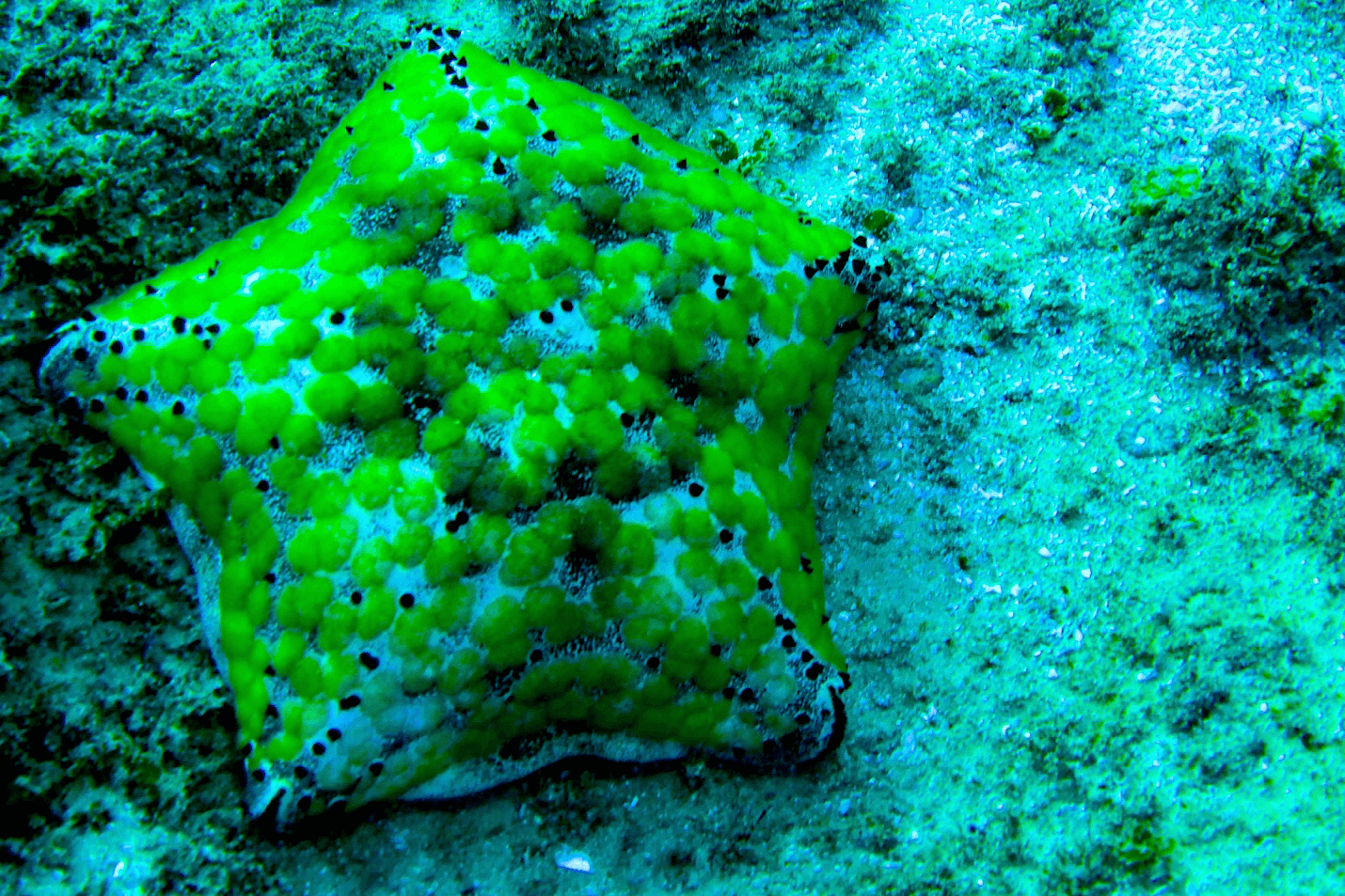
A sea star that we do not have in Bocas is the pincushion sea star photographed here, Culcita novaeguineae. These sea stars were everywhere and I could not get enough of them; so cute! Photo by Cinda Scott
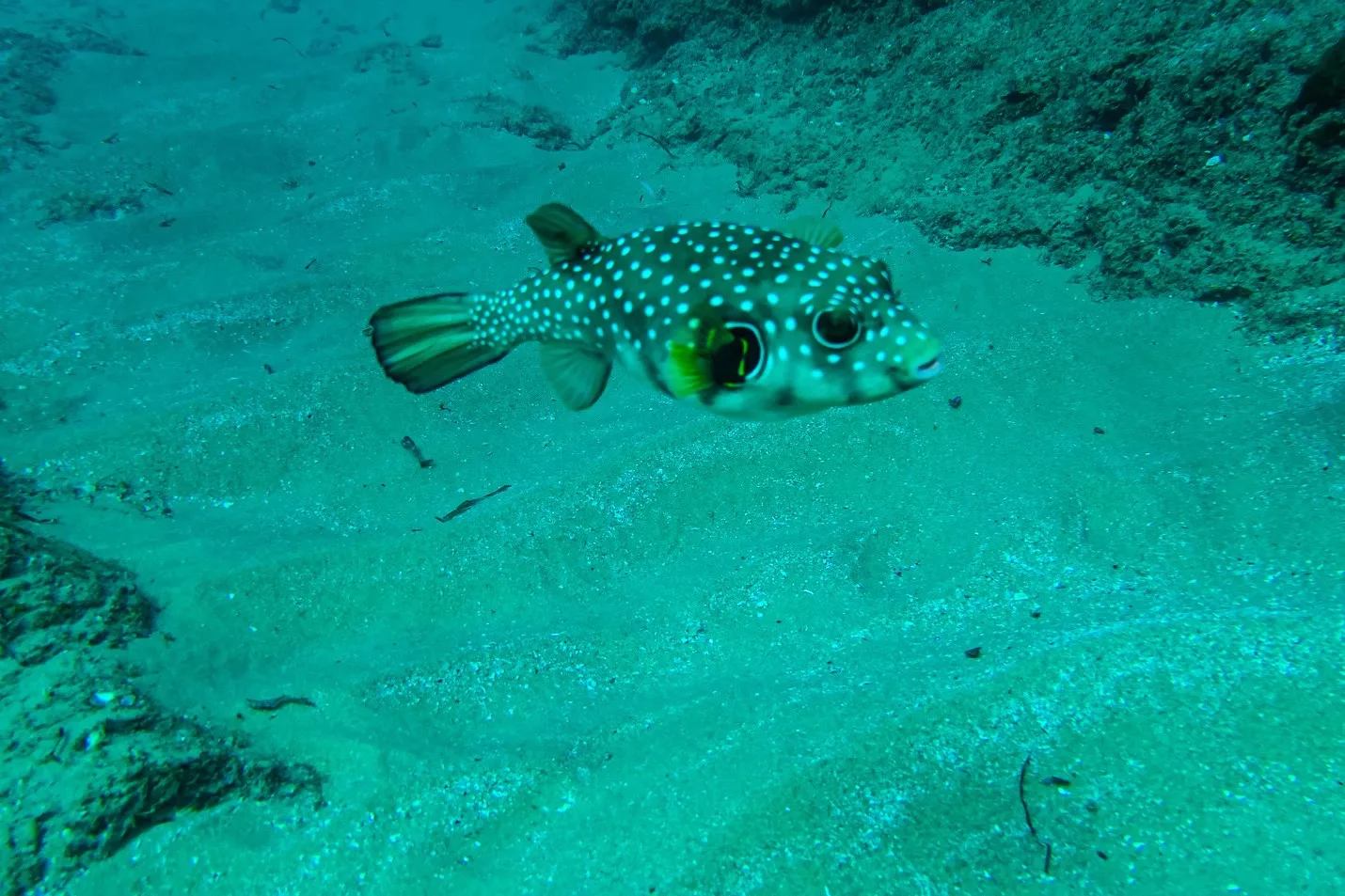
This friend followed me for a while on a shallow dive at Mike’s Cupboard in Tofo. There are a few different species of pufferfish in the Indian ocean, but photographed here is the White Spotted Pufferfish, Arothron hispidus. Photo by Cinda Scott
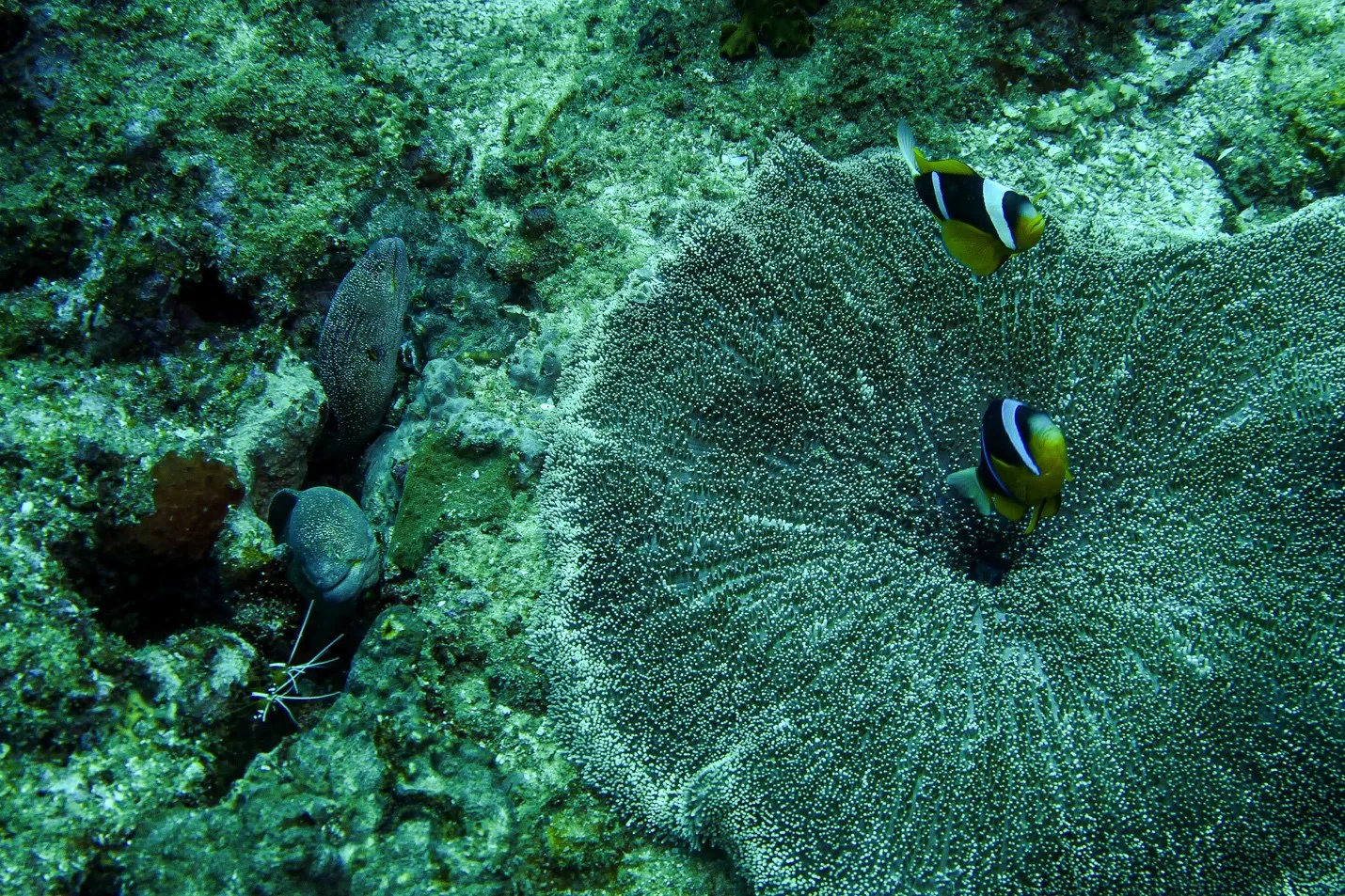
“Everything is Better in Twos”. In this interesting photo, there are two anemonefish, two eels and two shrimp. I don’t know why they were all hanging out together, but there must have been some kind of party that I interrupted. Photo by Cinda Scott

“There’s no place like home”. I took this photo in Zanzibar, Tanzania and though I was very far from home, this little fish reminded me of how fortunate I am to be able to call a place home and to always remember where I come from. This fish looks so comfortable perched on its reef, protecting its turf. Photo by Cinda Scott.

“Be Different”. This is by far my favorite photo from Tofo, Mozambique. I always imagine that coral reefs are like small cities and everyone knows where they are going and what stops they need to make. Perhaps some errands need to be made so you roll deep with your fish crew to look for some algae. In this photo, a very brave schooling banner fish swims alone amongst other schools of fishes. You can almost sense that he saw me as in the photo he is kind of looking back at me. I love this photo because it reminds me that it is okay to stand out and to be different and to always shine even in the face of challenges. Photo by Cinda Scott at Sherwood Forest dive site, Tofo, Mozambique.
Related Posts

Bhutan Honored with the Murie Spirit of Conservation Award

